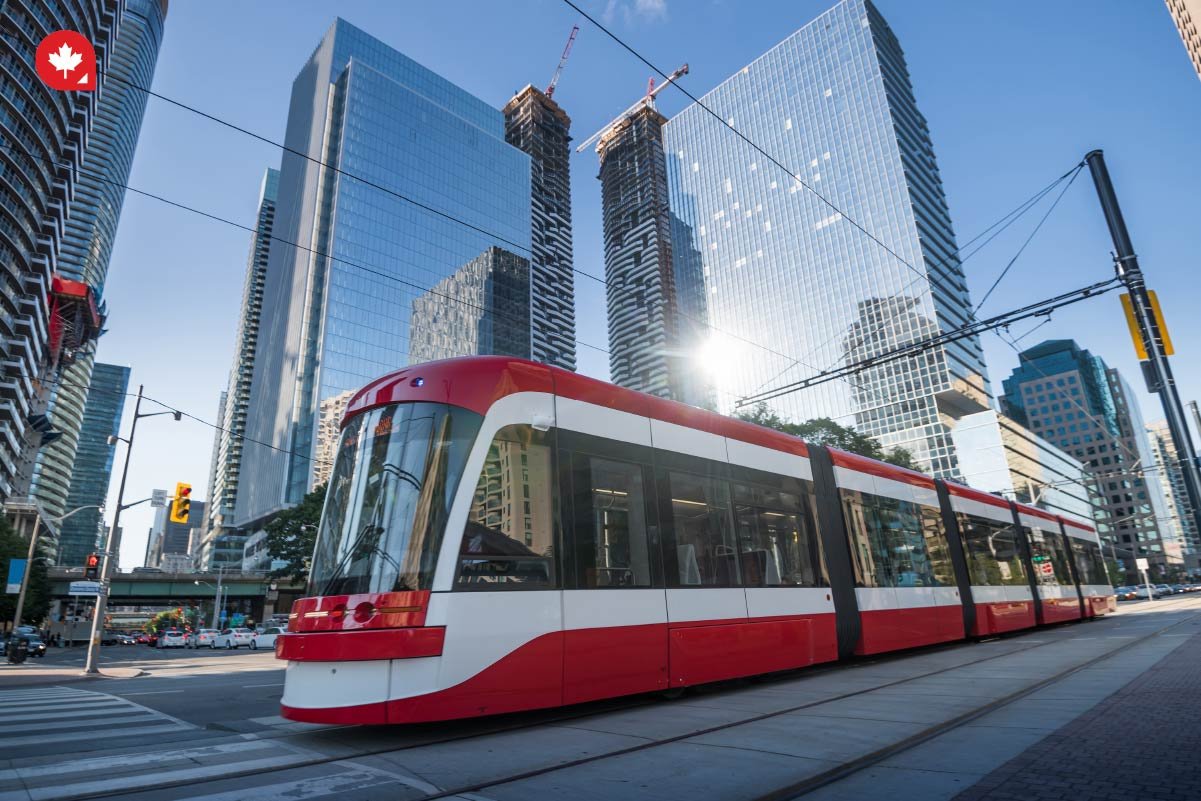Navigating transportation in a new country can be daunting, but fret not; we're here to guide you through it.
In recent years, public transit usage has surged across major Canadian cities. For instance, Toronto witnessed a staggering 92.5% increase in commuters utilizing public transit between May 2021 and May 2023, reaching 552,000 riders. While the average commute time by car slightly increased to 24.5 minutes, public transit users maintained a steady average of 42.2 minutes, as reported by Statistics Canada.
Considering nearly 16 million Canadians commute to work, understanding transportation options is crucial. Canada offers efficient transit systems like the Montreal Metro, Toronto subway, and Vancouver SkyTrain, supplemented by services like the Link Train at Toronto Pearson International Airport.
Whether you're commuting to work or exploring the city, Canada's public transit ensures accessibility and convenience, even without a car.
Planning Your Public Transportation Commute in Canada

Whether you're a seasoned city dweller or a new resident, navigating public transportation can be a breeze with a little planning. This guide will equip you with the essentials for a smooth commute on Canada's public transit systems.
Popular Public Transportation Options in Canada
Most Canadian cities offer a combination of the following public transportation options:
- Buses: The most widespread form of public transportation, reaching most neighborhoods and streets.
- Trains: Major cities boast rapid transit systems (subways or metros), light rail for suburban areas, and commuter rail connecting suburbs to city centers.
- Streetcars (Trams): These are found in some cities, offering a unique and historic way to get around.
Finding Your Route and Schedule
Planning your route in advance is key to a stress-free commute. Here's how:
- Transit Authority Websites and Apps: Every city's transit authority has a website and often a mobile app with route maps, schedules, and real-time updates.
- Journey Planning Tools: Many city websites offer journey planning tools that allow you to input your origin and destination to receive detailed route options and estimated travel times.
- Google Maps: Often integrates real-time public transit information, allowing you to plan your trip directly on Google Maps.
Ticketing and Fare Options
- Tickets: Single-ride tickets are available for occasional riders. Purchase them at stations, convenience stores, or directly from bus drivers (with exact fare required).
- Passes: Consider fare passes for frequent riders. These offer unlimited travel within a specific period (day, week, or month) and are typically more economical than single tickets. Many come in various formats, including reloadable cards.
With a little planning and this guide at hand, you'll be navigating Canada's public transportation system like a pro in no time.
Benefits of Using Public Transportation in Canada

Cost-Effective Commuting
Using public transportation in Canada can significantly reduce commuting costs compared to owning and maintaining a car. With fare structures designed to accommodate various budgets and discounted passes for regular users, public transit offers an economical option for daily travel. Additionally, commuters can save on expenses related to parking fees, fuel, insurance, and vehicle maintenance, contributing to substantial long-term savings.
Environmentally Friendly Choice
Opting for public transportation aligns with sustainable living practices, as it reduces carbon emissions and alleviates traffic congestion. By choosing buses, subways, or trains over personal vehicles, commuters actively contribute to mitigating air pollution and combating climate change. Furthermore, many Canadian cities prioritize eco-friendly initiatives within their transit systems, such as the integration of electric or hybrid vehicles, promoting a cleaner and greener environment for all residents.
Reduced Stress and Improved Well-being
Public transportation offers a more relaxed and stress-free commuting experience compared to driving. Passengers can utilize travel time for leisure activities, catching up on work, or simply unwinding without the added pressure of navigating traffic or finding parking. Additionally, by eliminating the need to drive in heavy traffic or adverse weather conditions, public transit users experience less daily stress, leading to improved mental well-being and overall quality of life.
Major Public Transportation Systems in Canadian Cities
Toronto Transit Commission (TTC)
The Toronto Transit Commission (TTC) operates an extensive network of subways, buses, and streetcars serving Toronto and its surrounding areas. With over 1.6 million daily riders, TTC is one of the largest transit systems in North America, providing efficient and reliable transportation options for commuters and residents alike.
Société de Transport de Montréal (STM)
The Société de transport de Montréal (STM) is the primary public transit system serving Montreal and its metropolitan region. STM operates a comprehensive network of buses and the Montreal Metro, comprising four lines and 68 stations. With innovative services and a commitment to sustainability, STM plays a vital role in facilitating mobility and connectivity within Montreal.
TransLink (Vancouver)
TransLink is the regional transportation authority responsible for managing public transit in Metro Vancouver, British Columbia. With services including buses, SkyTrain (automated rapid transit), SeaBus (ferry), and West Coast Express (commuter rail), TransLink offers seamless integration and convenient travel options for Vancouver residents and visitors.
Tips for a Smooth Public Transportation Commute

Etiquette Tips for Public Transit Riders
When using public transportation, it's important to be mindful of your fellow passengers. Practice good etiquette by offering seats to those in need, keeping noise levels down, and refraining from taking up extra space. Additionally, remember to wait for passengers to exit before boarding and avoid blocking doors or aisles. By being considerate and respectful, you can help create a more pleasant commuting experience for everyone.
Staying Safe on Public Transportation
Prioritize your safety while using public transportation by staying alert and aware of your surroundings. Keep your belongings secure and avoid displaying valuables. When traveling at night, wait in well-lit areas and consider sitting near the driver or other passengers. Familiarize yourself with emergency procedures and know how to contact transit authorities in case of an emergency. By taking these precautions, you can ensure a safe and secure commute on public transportation.
FAQs
Is it Difficult to Live in Canada Without a Car?
It depends on location. Big. Cities like Toronto and Vancouver have good public transit, making car ownership less necessary. However, suburbs and rural areas often rely heavily on cars. Consider your lifestyle: car-free living requires planning for groceries, errands, and social outings that might be spontaneous with a car.
How Reliable is the Canadian Public Transport System?
Reliability varies. Major cities generally have frequent schedules and decent coverage, but delays can occur. Smaller cities and towns may have less frequent service or limited routes. Research the specific system in your area for dependability.
What is the Most Common Means of Transportation to Work in Canada?
Driving is the most common way to work in Canada, but the number of commuters using public transit is increasing, especially in major cities. With rising car costs, good public transit can be a financially attractive option.




